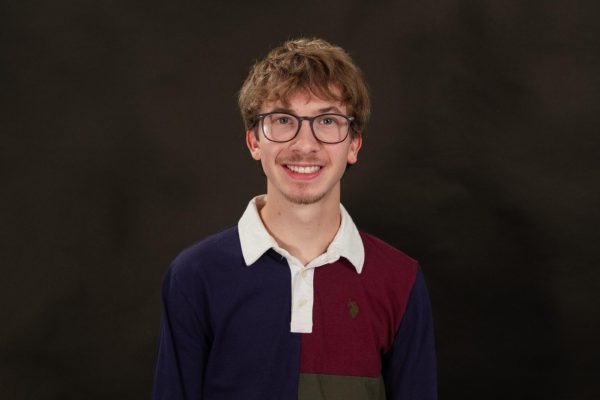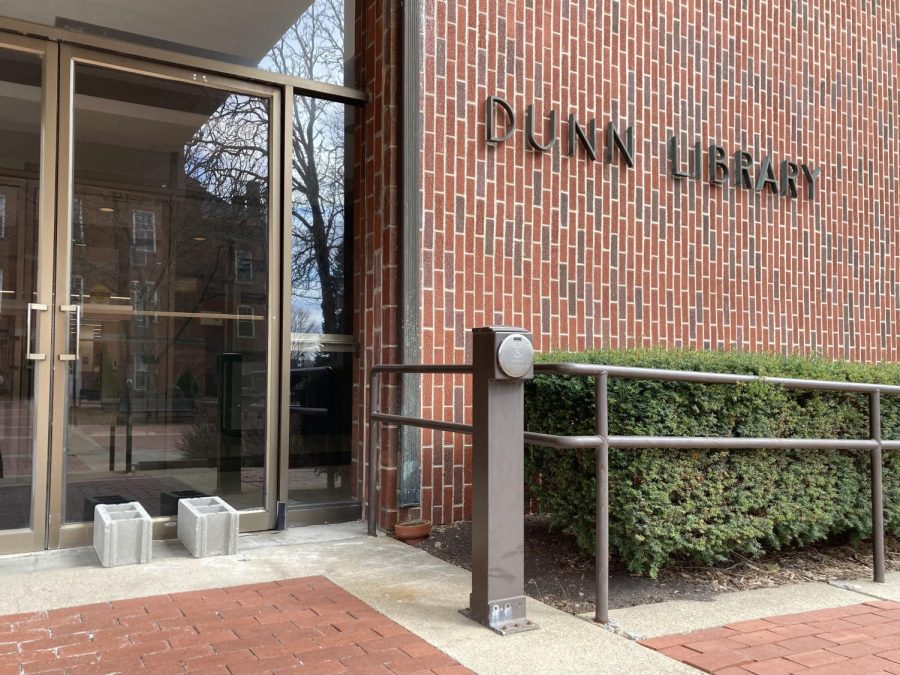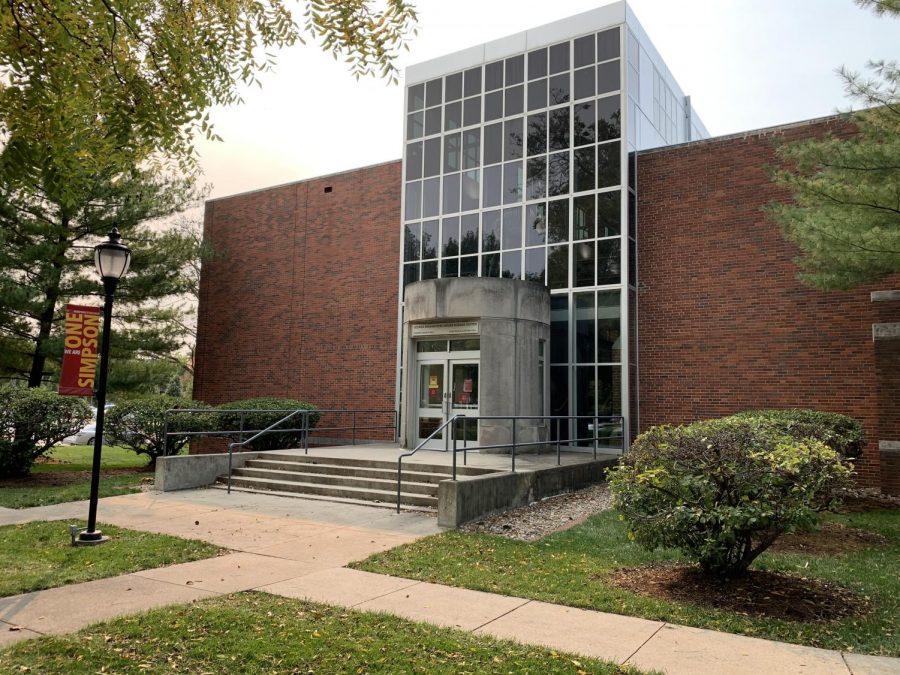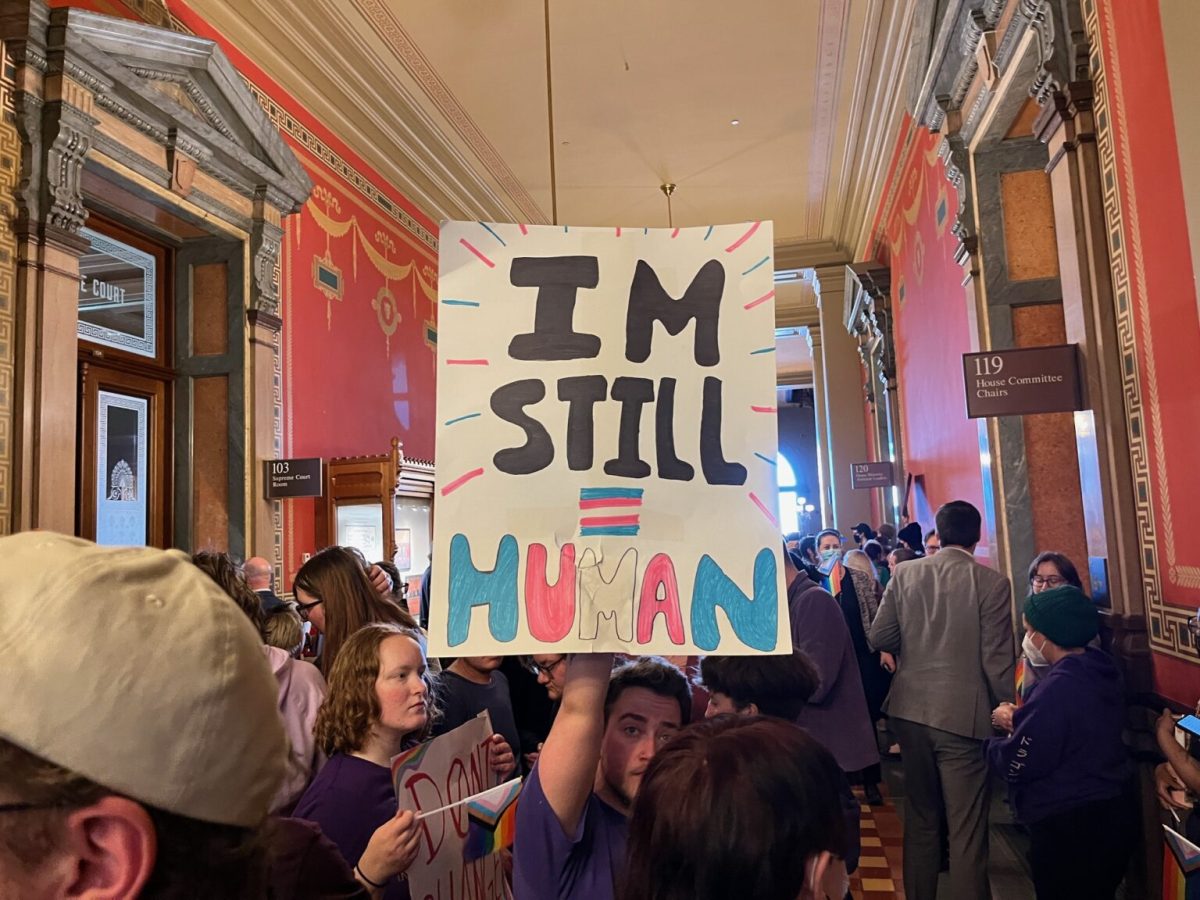Summer research highlights
November 9, 2022
Students had the opportunity to present the research they conducted over the summer on Oct. 26. as part of the Fall Research Symposium. Here’s what students had to say about their experiences:
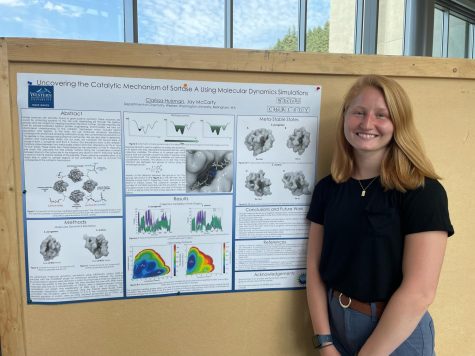
Clarissa Huisman:
“For my research, I was working with Dr. McCarty, one of the faculty members at Western Washington University.
The goal of my project was to study the catalytic mechanism of sortase enzymes and determine transition and meta-stable states. I did this using molecular dynamics simulations combined with metadynamics. We were able to determine meta-stable states for both of the sortases we were working with, which is a great advancement in finding out more about the catalytic mechanism as a whole.
During this time, I had the opportunity to meet a lot of new people and make some really great connections. I would encourage anyone thinking about doing an REU to apply to one or many. They are a wonderful opportunity to learn more about the field you’re interested in and meet a lot of great people!”
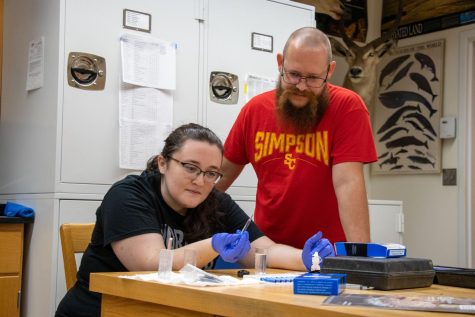
Tyler Love:
Tyler conducted this research project with Jenna Pfeiffer.
“We researched the effectiveness of mycofiltration in improving water quality. Mycofiltration is the intentional cultivation of fungal mycelium to facilitate water quality improvements. Meaning we took burlap sacks and filled them with an inoculated substrate, and allowed the mycelium to grow for about four weeks. We then poured water with a known amount of contaminants through the filtration bags. We then tested the water post-filtration to see if the number of contaminants was reduced.
Our water sources in Iowa and around the country are highly polluted with runoff from farm fields and highways. Some of the most prevalent pollutants are fertilizers such as phosphates and nitrates as well as herbicides. We tested for the removal of phosphates, nitrates and the herbicide glyphosate commonly found in Round-up. Our results showed a statistically significant reduction in the number of phosphates and nitrates in the water. More research is still needed in this area, but it is a hopeful step toward low-tech and low-cost water conservation efforts.
We were able to work with local companies such as West Hill Brewing Company, Indianola Sawmill for hire, and the Indianola Brush Faculty to acquire our substrates for free and remove materials from their waste cycles. This experience helped me realize a passion for finding low-tech and affordable solutions for environmental protection.”
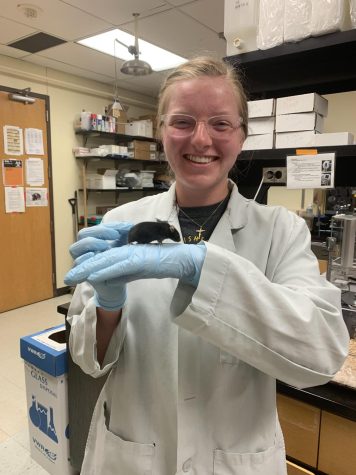
Kacie Cowman:
“My research was on colorectal cancer and the polyps, or abnormal growths, that colon tumors often form from. The main goal of my project was to identify the genes responsible for influencing the polyp shape, which plays a big role in how easily these polyps can be detected on routine colonoscopies.
The long-term goal of my research was to identify the genes responsible for influencing polyp shape and eventually assemble a genetic test with this information. This genetic test would allow doctors to predict what polyp shape their patients likely have and know specifically what to look for during colonoscopies. By improving early detection strategies and risk assessments, these genetic tests could lessen the number of missed colorectal polyps and lower the number of people who die every year from colorectal cancer.
While being involved in this research program, I got to live in College Station, Texas for an entire summer – something I never would’ve had the opportunity to do otherwise. It was the farthest and longest I have ever lived away from home, but I loved experiencing a new region of the country and a different culture from Iowa. I explored much of the surrounding area, visiting Austin, Texas and some state parks throughout the summer. While in the laboratory, I worked alongside graduate students and learned all about pursuing a Ph.D. and the research process. I greatly expanded my lab skills and even designed some of my own experiments, and I really enjoyed helping the graduate students with their various projects.
I am so grateful to the professors who helped me find this opportunity, wrote amazing letters of recommendation, and encouraged me to pursue the program at Texas A&M University. I am also very thankful to Career Development for their assistance with writing and proofreading all of my program application materials. I truly could not have gotten into this program without all of their support!”
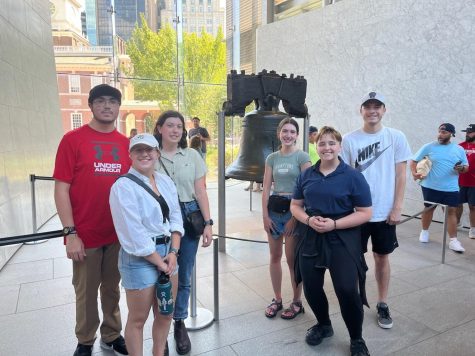
Tanith Norris:
Tanith conducted this research with Katelyn Smith and Allison Young.
“Our project focuses on analyzing digital healthcare decisions made by families of individuals with Down syndrome. There are 71 Down syndrome specialty clinics in 34 states across the country, but it is estimated that 5% – 20% of eligible patients are enrolled in these specialty clinics. In coordination with our collaborators at the Massachusetts General Hospital, we fielded a national survey that yielded 290 responses from 41 states and Puerto Rico. The goals of this survey were to understand the frustrations of caregivers of individuals with Down syndrome and determine if we can predict caregivers’ satisfaction with their healthcare options based on their survey responses.
This is the fifth installment of the Bryan Summer Research Program in the past decade focused on research relating to Down syndrome. Our focus this summer builds on findings from previous projects that demonstrate the logistical barriers to receiving care from brick-and-mortar Down syndrome specialty clinics due to their sparsity across the United States. Our research partners at the Down Syndrome Program and Lab of Computer Science at Massachusetts General Hospital launched a virtual asynchronous clinic called Down Syndrome Clinic to You (DSC2U), the first of its kind in providing telehealth and resources on diagnoses to people with Down syndrome. This program was launched in March 2020, right at the beginning of the COVID-19 pandemic, but it is still severely under-enrolled. By sharing our findings with MGH, we hope that they will be able to gain perspective on how both physical and virtual clinics can be improved to serve the Down syndrome community better.
The Bryan Summer Research Program was an amazing opportunity that helped me gain insight into careers involving applied mathematics. I learned R, a programming language often used in industry analytics, which is a great introduction to data processing. It was a unique and compelling experience to add to my resume as well, and I know I will be able to impress future employers with undergraduate research under my belt. My favorite part was having lunch from a variety of ethnic restaurants with both research groups and advisors on Fridays. The trip to present our findings in Philadelphia was awesome, too! I would recommend BSRP to any mathematics or actuarial/data science majors, especially if you have an interest in computer science.”
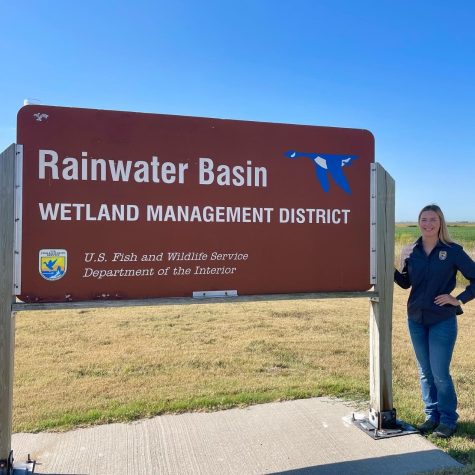
Kylie Tierney:
“My research was about wetland management and finding more sustainable management techniques to implement at Waterfowl Production Areas (WPAs) in the Rainwater Basin of central Nebraska. We were specifically monitoring wetlands that had been previously restored and recorded the changes in native plant communities and ponding ability. Wetland restoration involves removing sediment that has accumulated over the years due to changes in the landscape that significantly affects wetland hydrology and functionality. Our surveys targeted native plant composition in wetlands and how they correlate with how much sediment is removed from previous restoration.
The significance of my research is that it will impact management decisions of future restoration work planned at different WPAs in the Rainwater Basin Wetland Management District. Especially since sediment removal is a controversial issue within wetland conservation, our research supports that the more sediment that is removed, the functionality and sustainability of wetlands will increase. By increasing the amount of sediment removed at WPAs, it will be more financially beneficial by cutting the cost of annual management practices. The theme of our research was moving from treating the “symptom” of the problem to treating just the problem.
Honestly, my experience being involved in this research was super beneficial. I really enjoyed my time working with the U.S. Fish and Wildlife Service and became really interested and passionate about the work we were doing. The great thing about the DFP program (Directorate Fellows Program) is that after I graduate in May, I will be eligible for direct hire to a full-time, permanent position with the USFWS without competition.”




